

For my brother Pedro and I, the end of the school year meant the return to our home. Mavinga - south east of Angola - was our home since 1966 when my parents bought a cattle business and moved there. We had to stay in Nova Lisboa during the school period. Only at the end of the school year we could go home, due to the distance and difficulty of traveling in the Cuando Cubango. Cuando Cubango was known as Terras do Fim do Mundo (Land at the end of the Earth). If one was lucky it would take only a week to travel from Nova Lisboa to Mavinga.
Cuando Cubango was a wonderful part of the country. Wild, vast and sparsely populated with the type of characters you see in movies such as The African Queen and Out of Africa. I loved it and spend all my school year dreaming about the long holidays in Mavinga. On top of the fantastic lifestyle roaming the savannas and jungles of the Cuando Cubango, there was mum's cooking: abundant and delicious. One month before school finished Mum started cooking furiously in anticipation of her boys arrival. Wherever you looked in our house we could find jars of cookies, jams and all sorts of goodies Mum knew we liked.
The trip to Mavinga was in itself an adventure that I will always remember. From Nova Lisboa, a two hours flight by the super reliable Dakota-DC3 from DTA, the Angolan airline, would take us to Menongue, later called Serpa Pinto, the capital of the Cuando Cubango. Later on the DC3's were replaced by the Fokker Friendship and the trip was reduced by one hour. Menongue was a "big" city in those days, especially when compared with the other places in the province.
With a population of approximately 5,000 inhabitants, quite a few shops, the residence of the Governor and a couple of hotels, Menongue was the largest population centre in the district and the capital of the Cuando Cubango. The roads were not sealed, but as they were not that busy, dust was not a problem. The city was clean, tidy and with the Cuebe river running through it added an extra cool touch.
We normally stayed with our cousins Aurélia and Álvaro Pedroso. Our cousins had four children: Zé, Carla, Elizabete and Alvarito. Our cousin Aurélia's mother, grand auntie Constança, also lived with them. It was a house full of fun and confusion while we were there. We would top and tail at night in the lounge and auntie Constança pampered us like sons.
In Menongue we would have to wait for a supply truck or if we were really lucky a government officer travelling the province in business. In this case we would travel in luxury on board of a Land Rover. Depending on the luck of the draw a 4 to 8 days trip across the most beautiful wilderness in the southwest of Africa.
The hot weather and the state of the picadas (unsealed sandy roads) would limit the traveling speed to 10 km/h for the majority of the trip. We travelled during the earlier hours of the day and in the evening to escape the heat. We had to cook our own food, and sleep under the stars... what a fantastic life it was! The trip to Mavinga would start with a relatively fast journey of 120 km to Cuito Cuanavale. It would take us the full day to travel to Cuito Cuanavale. The place was a typical one road village without hotels or fancy shops, situated on the banks of the Cuito Cuanavale river.
In those days people living in villages always had a spare room for the visitors and they were happy to have them. It was the main source of news and gossip. Sometimes we would stay the night with the Chefe do Posto (government administrator), another times we would camp on the banks of the river. It was not until the war started in the south of the country that they built a bridge across the Cuito Cuanavale river.
Until then we used a jangada (large raft made with logs tied together) to cross the river. Unless one arrived before 4:00 PM the operator of the raft would refuse to take you across the river. If we were in a hurry, we would camp on the bank of the river to secure our position in the queue for the jangada crossing in the morning.
The crossing of the Cuito Cuanavale river was the first taste of adventure in the trip to Mavinga. There were no piers or a loading dock. The jangada was tightened to a couple of stumps on the river bank and the cars struggled to balance themselves on the small raft. The jangada had space for one car or truck only and was pulled by a couple of men helped by the passengers , using a steel cable laid across the river.
If you did not want to use the jangada one of the natives would take you across on a dugout canoe which was not any better or safer experience. The river was infested with crocodiles and therefore the thought of falling in the middle of the river was not something one would call fun.
The stories around the camp fire were invariably about accidents and vehicles falling off the jangada. One in particular where one of the passengers was killed by a crocodile was told over and over again. Depending on the skills of the person you were traveling with, the story got better every crossing and this, accompanied by the noises of the hippopotami in the river at night, created the right atmosphere and added a touch of veracity which kept us awake all night.
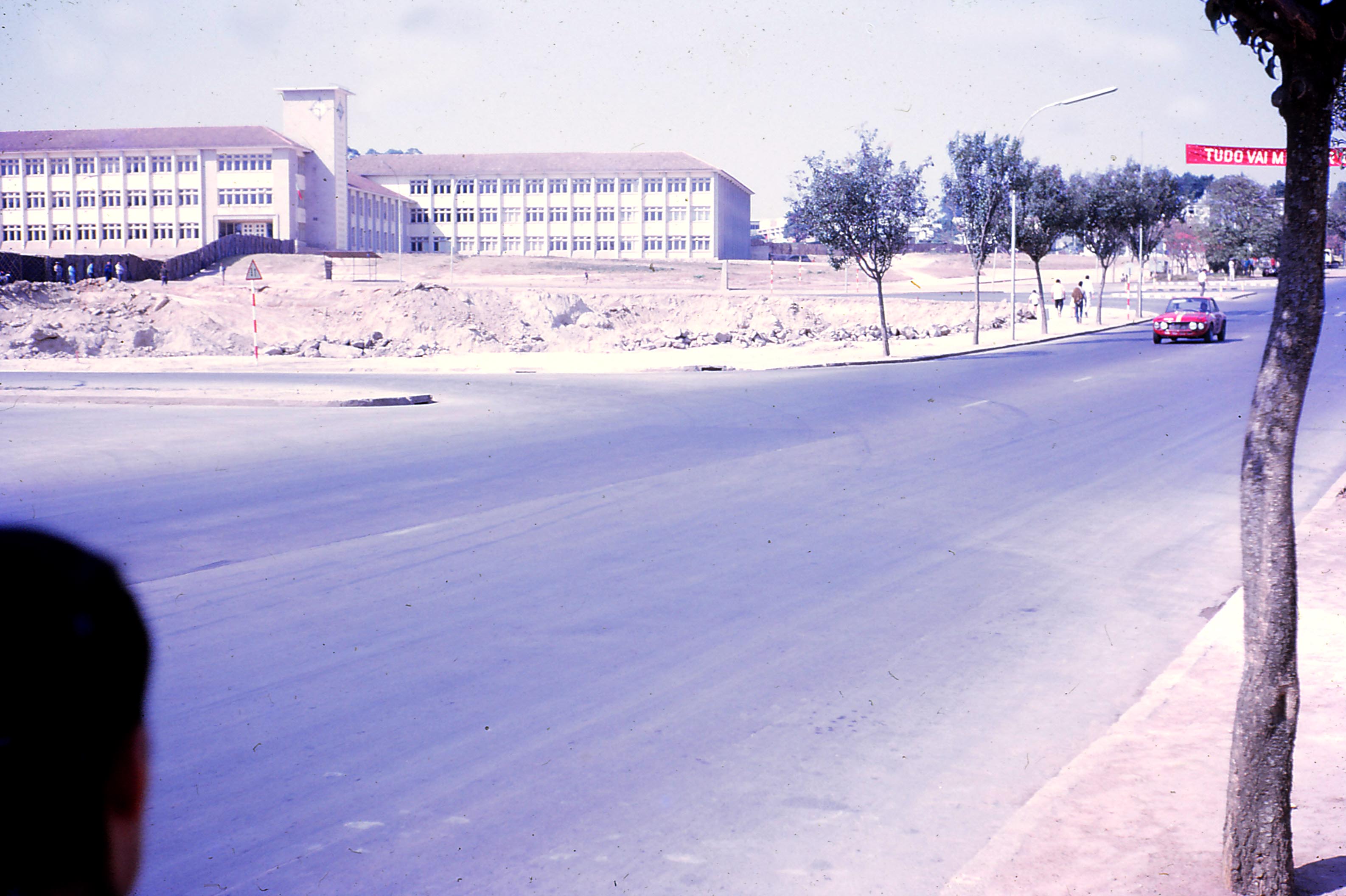
Nova Lisboa and the High School where Pedro and I studied
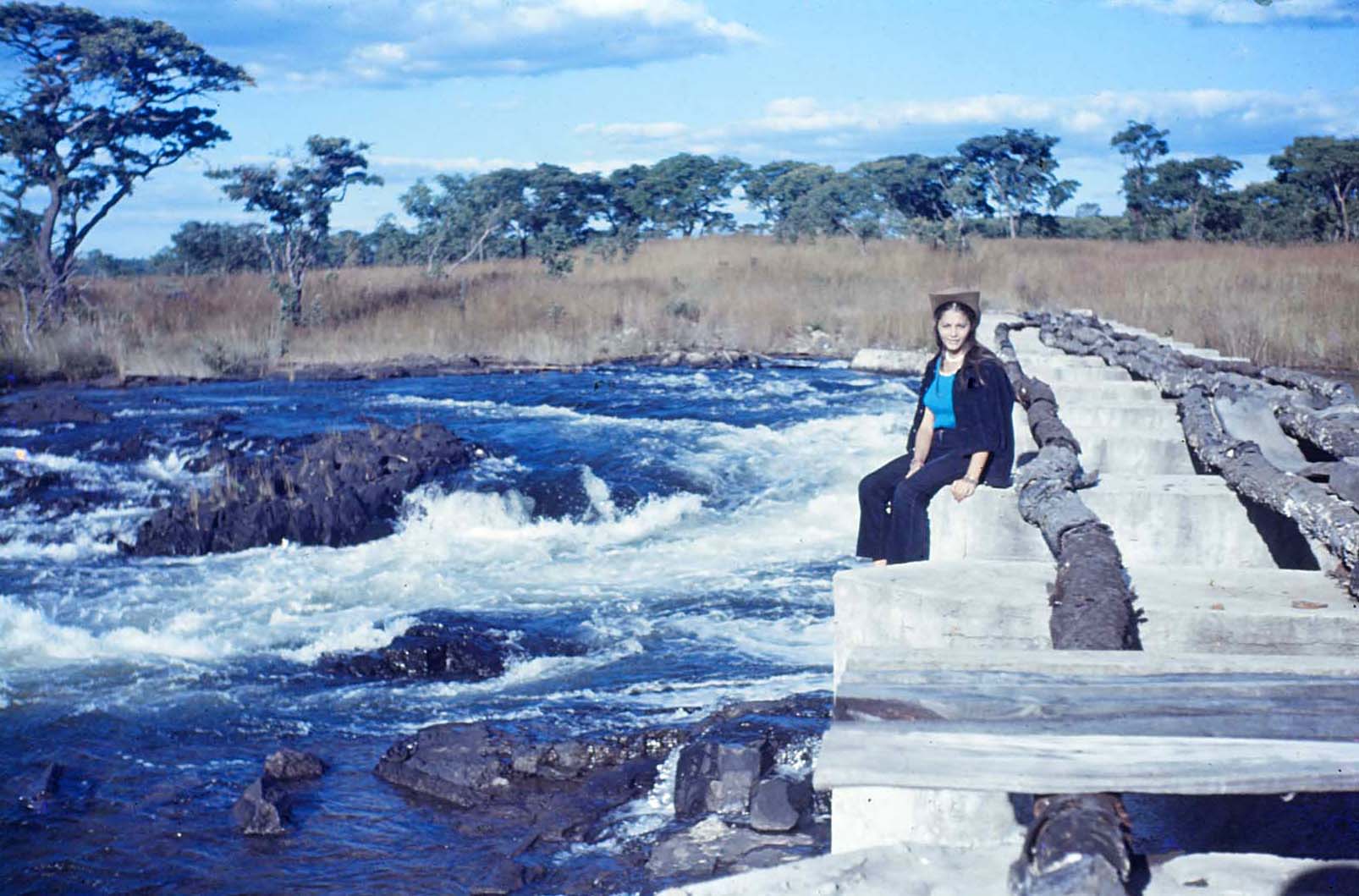
Filu in Menongue- Cuebe river
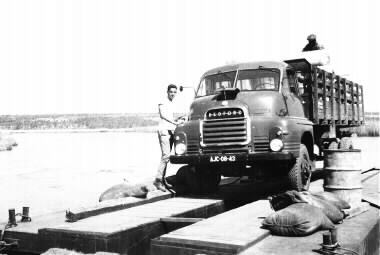
Cuito Cuanavale - Jangada
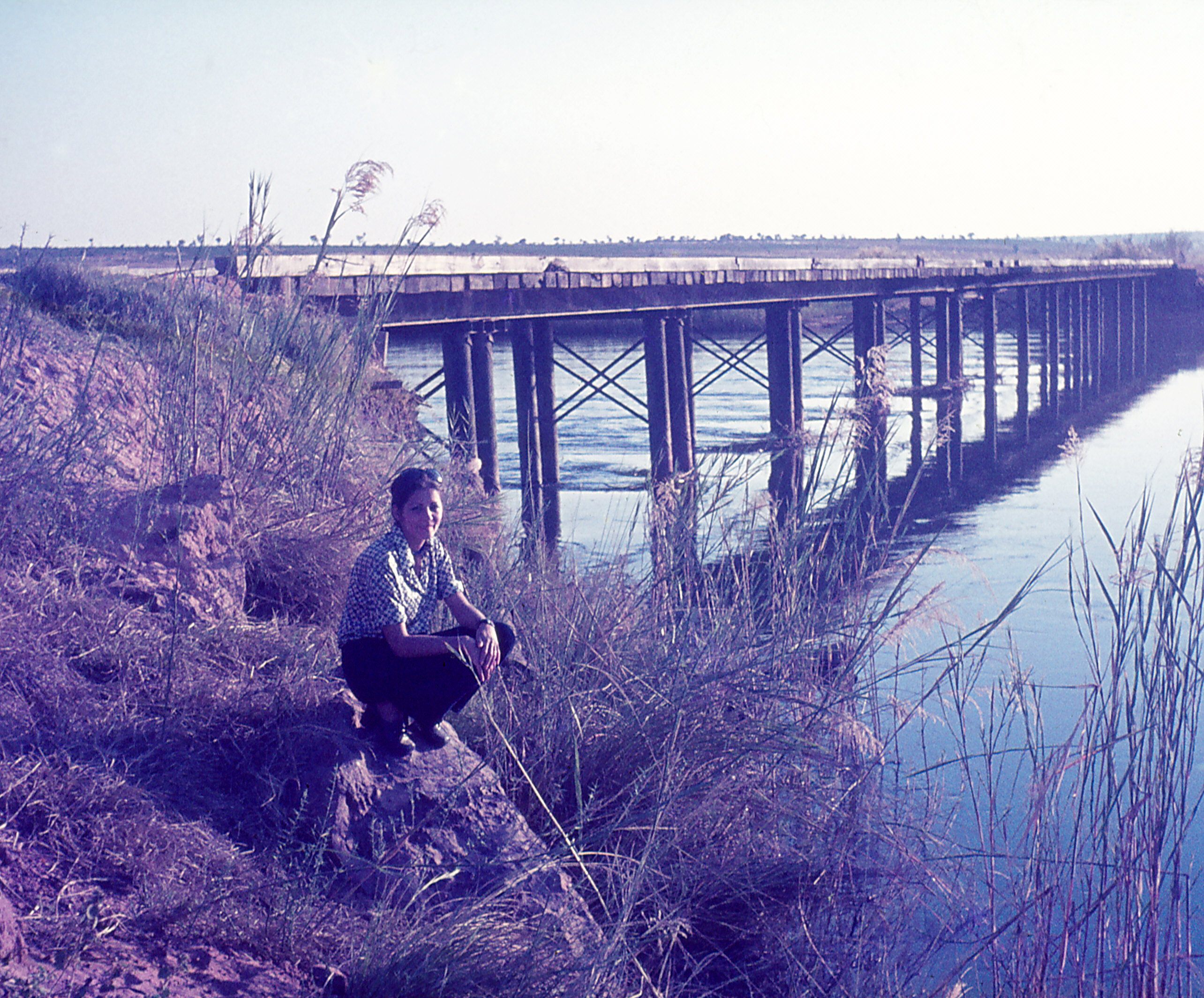
The bridge that replaced the jangada across the Cuito Cuanavale river
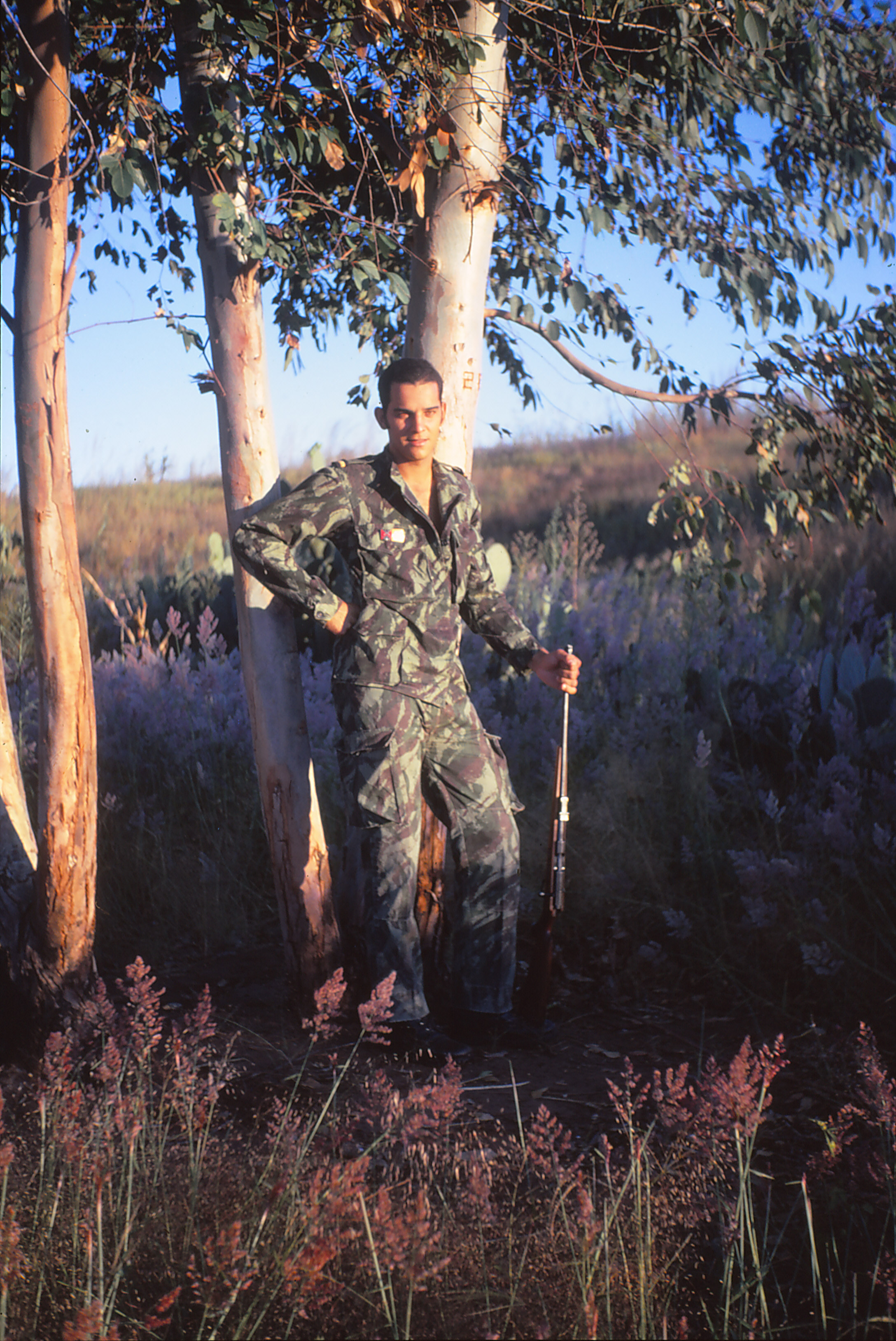
Our parents vegetable garden
I made my first trip to Mavinga in 1961 with my uncle Armando. Uncle Armando was a truck driver and transported Contratados (contracted labour) from Mavinga to Gabela in the hearth of the coffee region of the north of Angola. Uncle Armando was my raw model when I grew up. He was the rebel of his generation. Single, adventurous, fun to be with, good storyteller and a tremendous companion. Most of my trips before my parents moved to Mavinga were with my uncle Armando. Sleeping near the river was not very comfortable. The temperatures would drop below zero in the earlier hours of the morning and the cacimbo (dew) would wet all our blankets ( we did not have sleeping bags or tents). As the sun raised we would gather around the camp fire, half numb with the cold and would have coffee, bread with butter and any left overs from the night before.
The crossing would take most of the morning and therefore we all stopped on the other side of the river to have lunch, check the truck and ensure the load was well secure because things use to get rough from then on. I loved tuna rice and therefore this was the first thing I learned to cook. My mala do rancho(box with provisions for the trip) was full of tins of tuna and rice and that was the basis of my diet during the trip. Every truck in Africa use to have an Ajudante (helper) and my uncle Armando's ajudante was called Kinda. A big fellow with some fingers missing from one hand, the result of an accident. Kinda was a good mechanic and very experienced getting us out of trouble when the car got bogged down in the savannas.
From Cuito Cuanavale the road was a sort of a multiple choice of tracks. The soil was a powder like sand (beginning of the Kalahari Desert) and therefore when the track got too deep one would start another a little bit to the right or left. During the hot part of the day we used the hand accelerator and sat on the top of the cabin to cool down. The trucks would follow the road like a train on its tracks. To get out of the road one would have to dig a ramp in the sand, otherwise the truck was not able to jump the ridge. During the dry season we would drive most of the time in the savannah, but during the wet season we had to drive in the jungle because the savannah turned into a boggy wetland.
Between 11 and 4 o'clock in the afternoon we would rest; the heat was unbearable. Therefore we always had good lunches and long sestas (siestas) . Most of the time we would kill a cabra do mato (dik dik antelope) or a nunce (Southern Reedbuck ) and had nice stakes for lunch. Kinda always made pirão (cooked maize) for his meals and we shared it with him sometimes, when we were tired of tuna and rice.
From Cuito Cuanavale to Dima, the next village, there were two major obstacles to overcome. The Chana da Chambinga and the Mikango. These two bits of road tested the skills of the drivers and the strength of the trucks. In the dry season the powder like sand resembled quick sand, in the wet a flooded plain where a car could get bogged so deep we could not see the wheels.
With no trees to tie a winch it was a major test of endurance and ingenuity to free the truck. The trucks were fitted with balloon tires at the back (extra large single tyres) and the best they could do was 10 to 15 km/h. Once passed these two obstacles the rest was only a matter of time and perseverance. Dima was situated 60 km from Mavinga and was a minuscule village with three houses: two comerciantes (shop owners) and one Chefe do Posto (government officer). Dima was situated on the top of a small hill overlooking a valley that run all the way to Zambia. From Dima the next landmark was the Lomba River, 20 km from Mavinga. From there we could almost smell the food from my mother's kitchen.
Mavinga was an important village in the almost forgotten province of Cuando - Cubango. Two roads in a shape of a plus sign with houses on both sides, made the village. The roads were marked by two rows of orange trees. During the orange season, Mavinga provided a nice change of diet for people passing through or living in the area. The Cubia river ran a few hundred meters from the centre of the village and provided a place for people to wash the trucks, swim and even catch some fish for dinner.
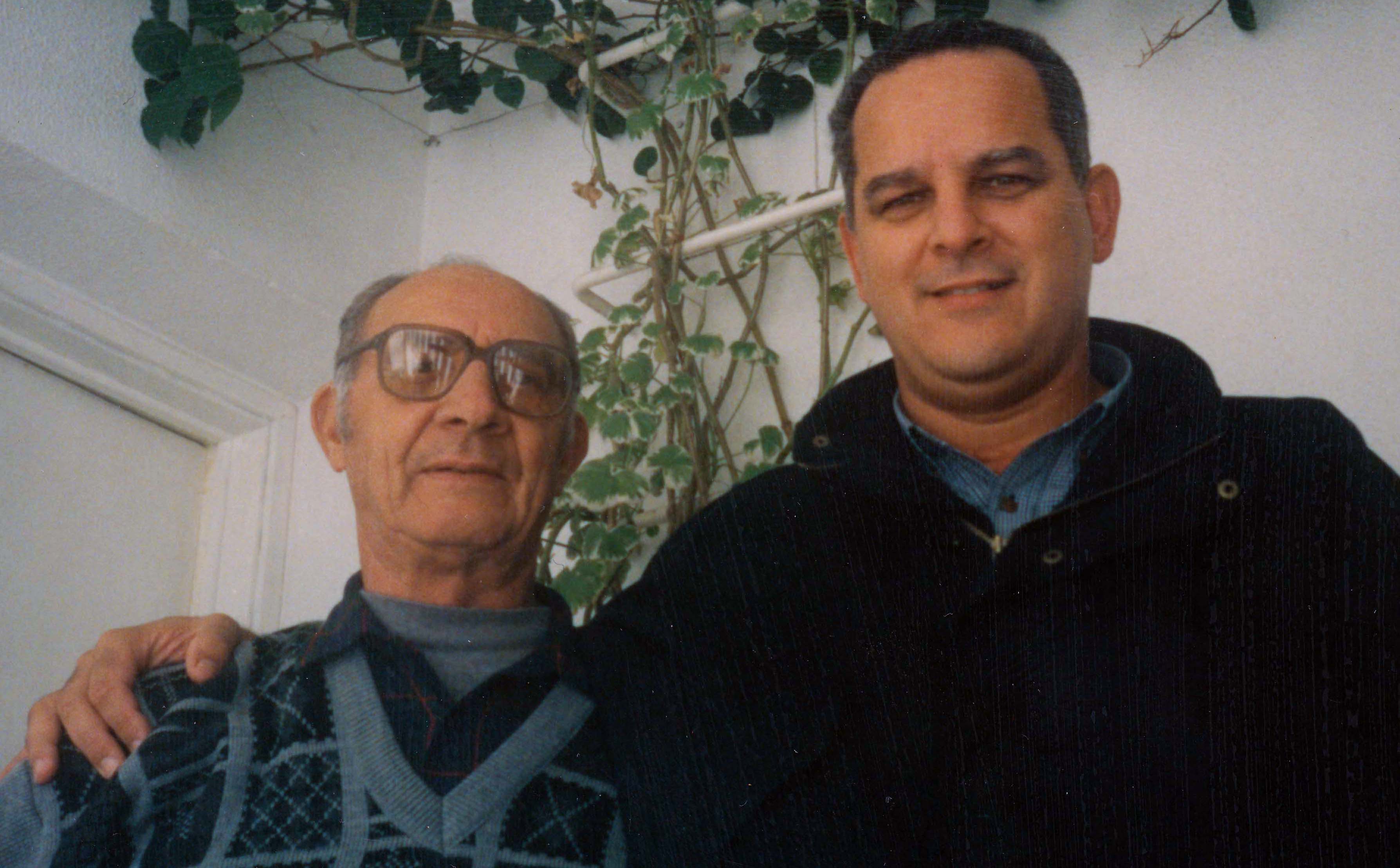
My uncle Armando and I in his house in Portugal
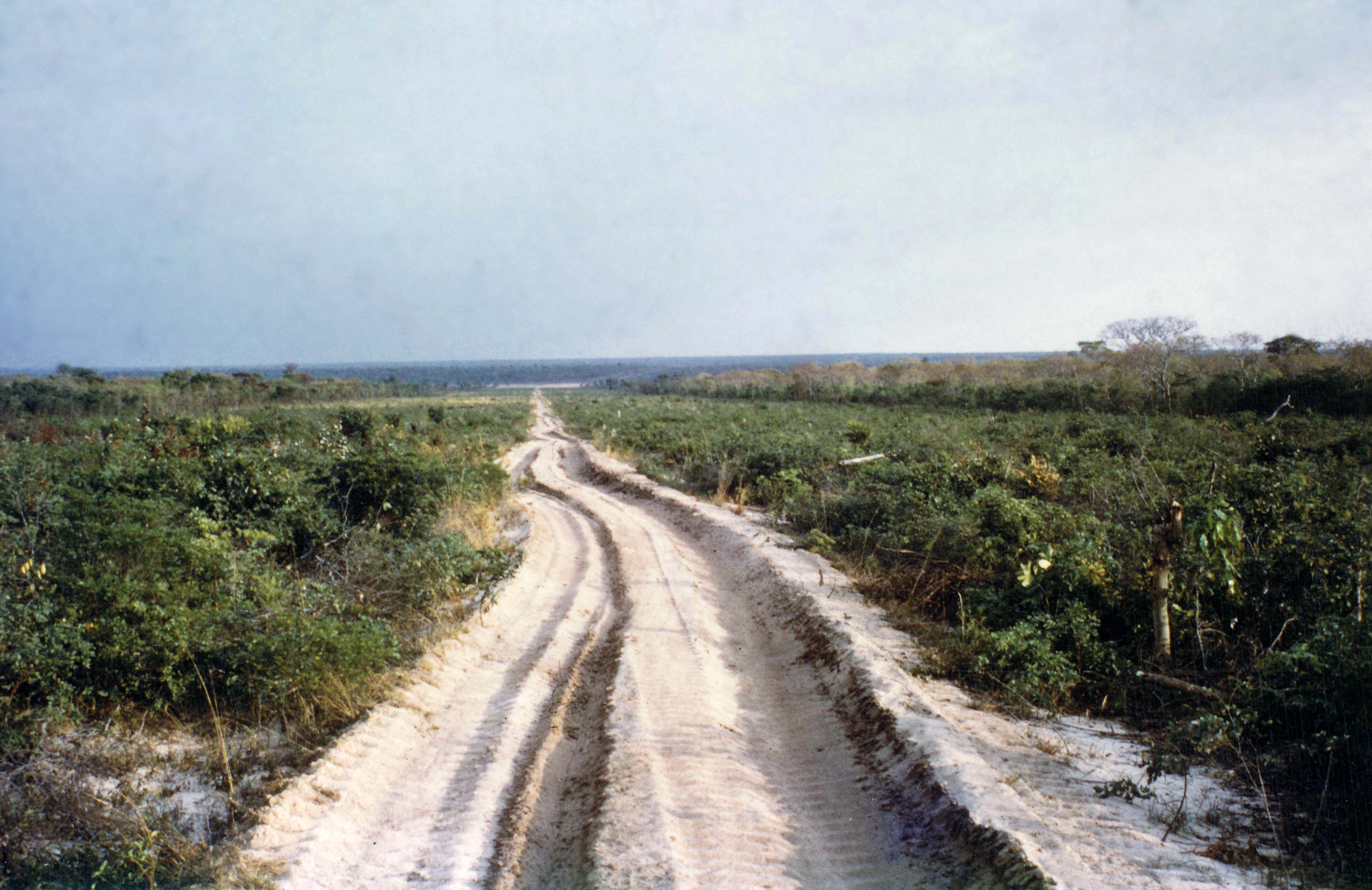
A picada somewhere in the Cuando Cubango
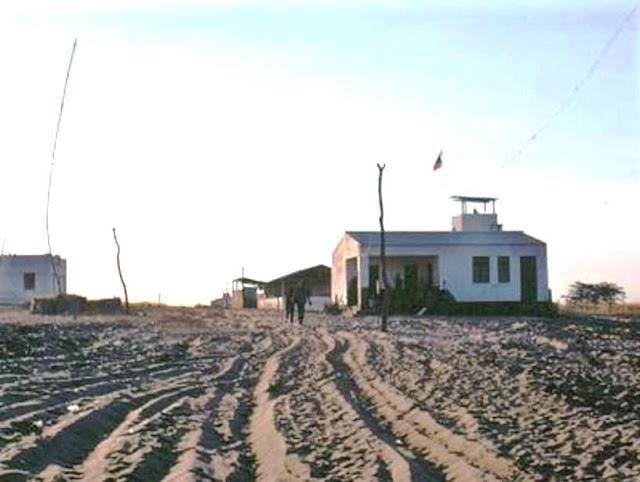
Dima - photo taken during my Army times
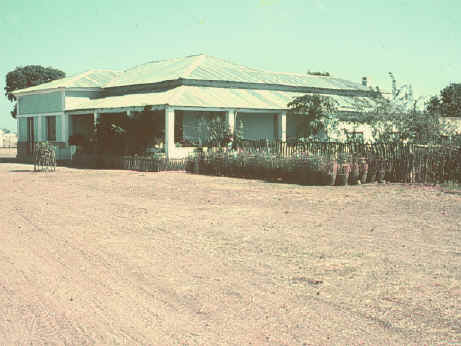
Our house in Mavinga
Mavinga was home for the medical mission fighting the tsetse fly, had a weather station, a school, hospital and an air strip. All up a permanent European population of less than 10. When the medical mission was in town, the population grew considerably with the addition of Dr. Cabral and his team of maybe four or five medicos.
A small quimbo (native village) was established in the vicinity of the village. The Soba (traditional authority) Kapusso was the authority in a quimbo of 30 to 40 people of the same clan.
Sixty kilometres west of Mavinga a safari camp, Kirongosi Angola Safaris, added an international flair to the area during the hunting season. The "high society" of Mavinga had the opportunity to rub shoulders with the world rich and famous from time to time.
On arrival we would be greeted by old friends. Mum and Dad obviously and all the people working in my parents' property:
António the cook and grandson of Soba Kapusso
Chinoia the foreman, a tremendous horseman
The general hand Tita a Camussequere (Kalahari bushman) who taught me some of their strange clicking language
The two tailors Sandumba and André
The pisteiros (trackers) Chiesso, Malassa, Luis and Miguel with whom I roamed the savannas in search of good trophies
and many others that I can no longer remember the names but the faces are still vivid in my mind.
One of first things to leave in the draw of the bedside table from then on was my watch and money. No need for these things in the bush. You eat when you are hungry ( which was most of the time) and there is nowhere to use money. Since 1961 I made this trip every year and could not wait to get back home.
Later on during the war, Mr. Barros started a small airline with a twin engines Cessna linking once a week the main villages of the Cuando Cubango. Land mines made the trip by truck too dangerous and even longer and Mr. Barros with his pucha-empurra (push-pull engines) Cessnas killed the adventure of travelling to the Terras do Fim do Mundo (Land at the end of the Earth)
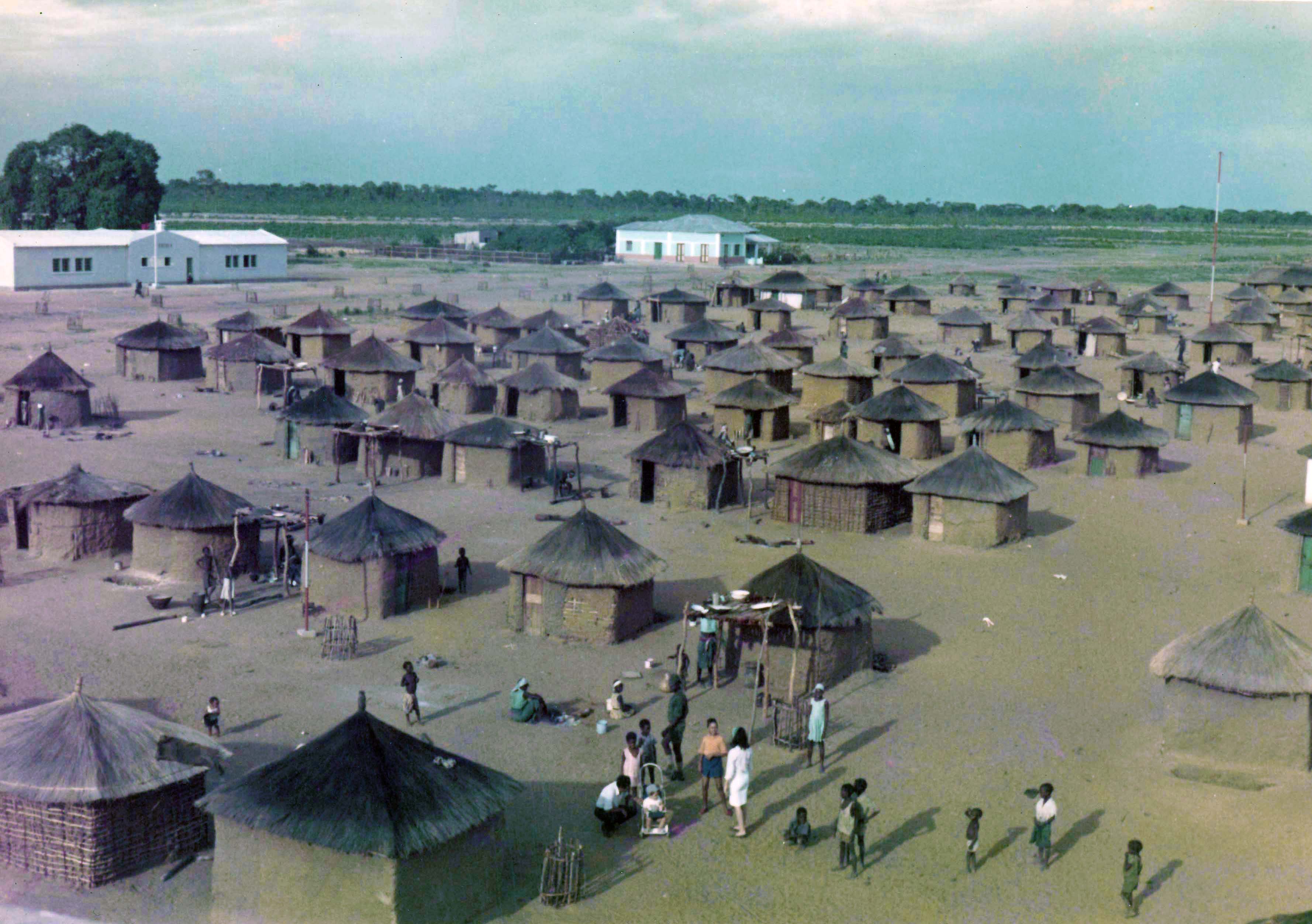
Mavinga - Our house at the end of the road
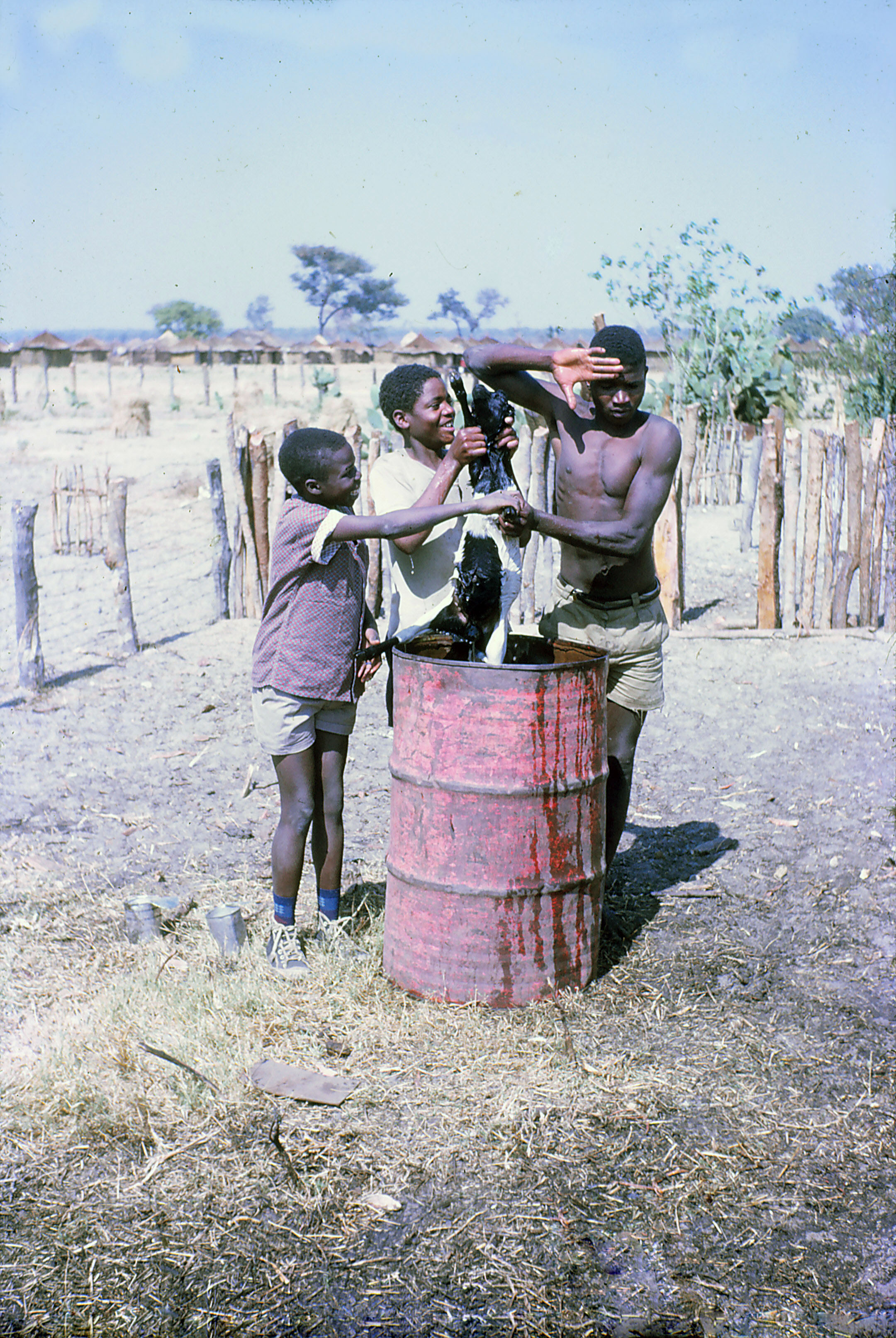
In our backyard - from left António, Tita and Chinoia
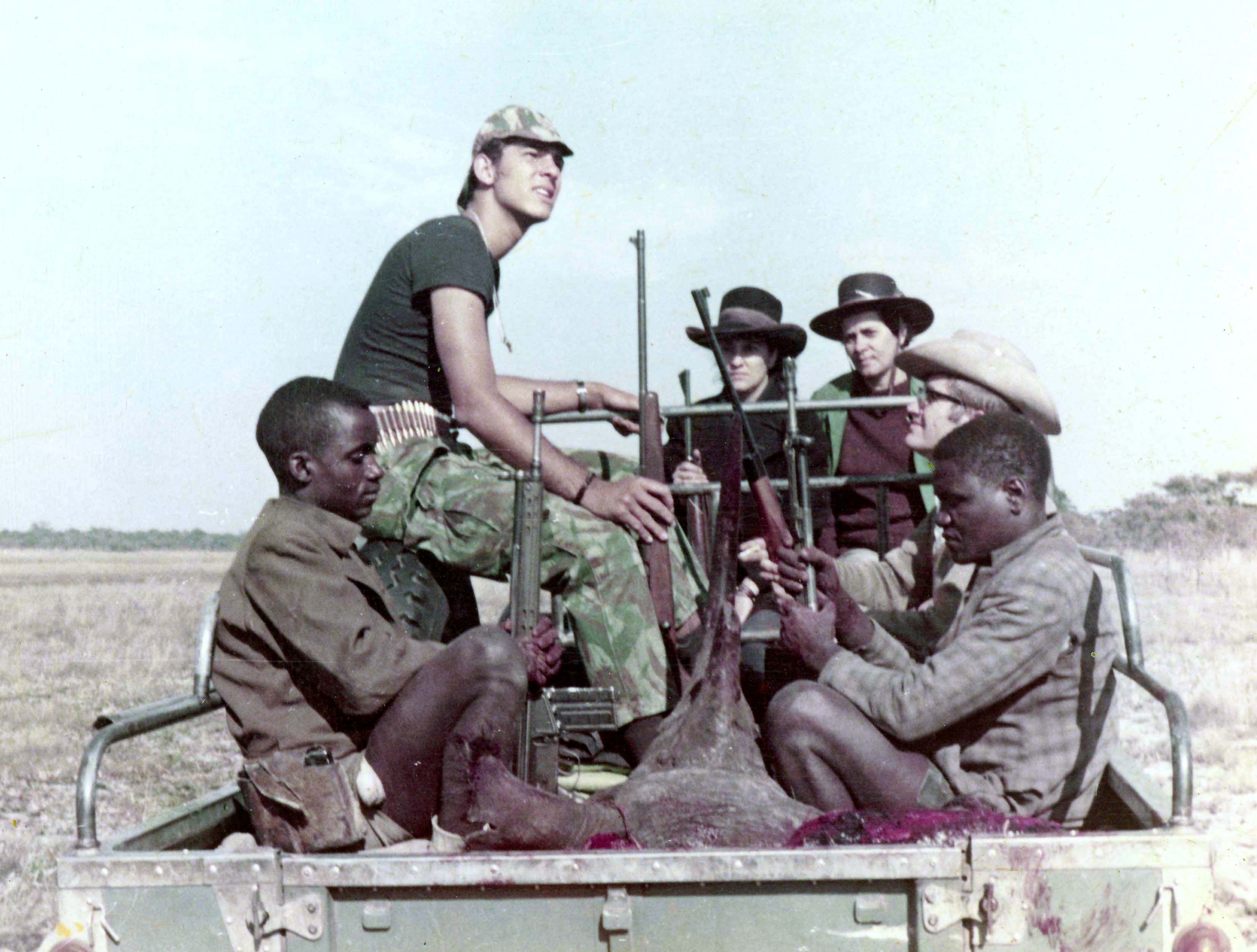
Somewhere in the Cuando Cubango. Siting with me at the back is Miguel and Malassa